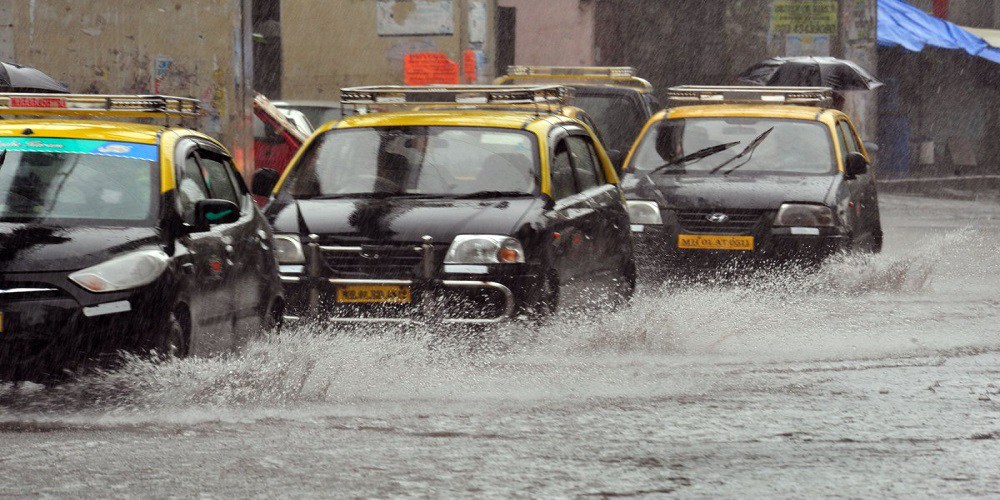Although artificial intelligence work similar to how our brains do, the technology has been proven to have one major advantage over the biological brain, and that is being able to master patterns inside huge tracts of data.
copyright by sanvada.com
 Such patterns can be used to help make scientific decisions. Like in this case, a group of student researchers has developed an AI-powered model that can help prevent issues of poor drainage, by analyzing topographical, statistical and other natural factors in a region.
Such patterns can be used to help make scientific decisions. Like in this case, a group of student researchers has developed an AI-powered model that can help prevent issues of poor drainage, by analyzing topographical, statistical and other natural factors in a region.
The system can identify areas and locations with higher susceptibility to waterlogging. This will help engineers make better decisions up front and avoid mistakes when tackling the topic of drainage right from the point of planning, before setting up infrastructures like roads.
The Focus of the Technology
Due to poor planning, metro cities often get hit by congestion issues and water logging during monsoon showers. Researchers, Apoorva Gupta and Aman Bansal and a team from Netaji Subhas Institute of Technology, Delhi, India, have combined rainfall, traffic, and location-based data to predict the severity of waterlogging on targeted areas.
Fed on the system, the data can be used to analyze and guide when designing cities. First, the team created a machine learning platform, trained it, and ran the collected data through.
The neural networks, which in this case act as the brain of the system was able to identify those areas that would have been given extra care when planning –and even pointed out newer areas that are naturally defenseless against waterlogging. The study was originally conducted in Philippines’ capital city, Manila, which has the same topography and environmental characteristics with India.
The Cost of Water Logging
In developing continents like Asia and Africa, and some parts of North America, the issue of waterlogging has been persistent. In 2016 to be specific, the roads of Gurgaon were completely impassable because of floods, which led to severely waterlogged streets. Situations like this leave thousands of citizens stranded for hours which directly translate to economic losses.
If people cannot go where they need to go to carry out their business ventures, it means they are not productive and solutions to such hindrances need to be established. “In Mumbai so far, it’s common to experience waterlogged streets,” said Rishab Gupta from the NSIT team.
Thank you for reading this post, don't forget to subscribe to our AI NAVIGATOR!
Impassable roads equal to heavy traffic, which means more fuel gets burned, and more time is wasted waiting in jams. Now, the solution to this lies in city planning, and that’s what this is trying to achieve. China (using the Alibaba supplied ET Brain, an AI-powered software) has also in the recent past deployed machine learning to assist in solving it’s city traffic issues. […]


Although artificial intelligence work similar to how our brains do, the technology has been proven to have one major advantage over the biological brain, and that is being able to master patterns inside huge tracts of data.
copyright by sanvada.com
The system can identify areas and locations with higher susceptibility to waterlogging. This will help engineers make better decisions up front and avoid mistakes when tackling the topic of drainage right from the point of planning, before setting up infrastructures like roads.
The Focus of the Technology
Due to poor planning, metro cities often get hit by congestion issues and water logging during monsoon showers. Researchers, Apoorva Gupta and Aman Bansal and a team from Netaji Subhas Institute of Technology, Delhi, India, have combined rainfall, traffic, and location-based data to predict the severity of waterlogging on targeted areas.
Fed on the system, the data can be used to analyze and guide when designing cities. First, the team created a machine learning platform, trained it, and ran the collected data through.
The neural networks, which in this case act as the brain of the system was able to identify those areas that would have been given extra care when planning –and even pointed out newer areas that are naturally defenseless against waterlogging. The study was originally conducted in Philippines’ capital city, Manila, which has the same topography and environmental characteristics with India.
The Cost of Water Logging
In developing continents like Asia and Africa, and some parts of North America, the issue of waterlogging has been persistent. In 2016 to be specific, the roads of Gurgaon were completely impassable because of floods, which led to severely waterlogged streets. Situations like this leave thousands of citizens stranded for hours which directly translate to economic losses.
If people cannot go where they need to go to carry out their business ventures, it means they are not productive and solutions to such hindrances need to be established. “In Mumbai so far, it’s common to experience waterlogged streets,” said Rishab Gupta from the NSIT team.
Thank you for reading this post, don't forget to subscribe to our AI NAVIGATOR!
Impassable roads equal to heavy traffic, which means more fuel gets burned, and more time is wasted waiting in jams. Now, the solution to this lies in city planning, and that’s what this is trying to achieve. China (using the Alibaba supplied ET Brain, an AI-powered software) has also in the recent past deployed machine learning to assist in solving it’s city traffic issues. […]
Share this: